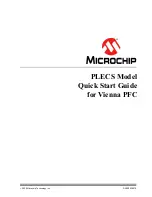
13
3.2 Complete Parameter Table
The parameters can be divided to 8 groups including alarm, control, input, output, communication, system,
setpoint and field parameter definition. They are listed as below in sequence:
Code
Name
Description
Setting
Range
HIAL
High
limit
alarm
Alarm on when PV (Process Value) >HIAL; alarm off when PV<HIAL-AHYS
Alarm output action can be defined by parameter AOP.
-9990
~
+30000
units
LoAL
Low limit alarm
Alarm on when PV<LoAL; alarm off when PV>LoAL+AHYS
HdAL
Deviation high
alarm
Alarm on when PV-SV>HdAL; alarm off when PV-SV<HdAL-AHYS
LdAL
Deviation low
alarm
Alarm on when PV-SV<LdAL; alarm off when PV-SV>LdAL+AHYS
HdAL and LdAL can also be used as high limit and low limit alarms when needed.
(Refer to the description of parameter AF)
AHYS
Alarm
hysteresis
Avoid frequent alarm on-off action because of the fluctuation of PV
0
~
2000
units
AdIS
Alarm display
oFF : don’t display AdIS in the lower display window when alarming;
on : alternately display AdIS in the lower display window when alarming.
oFF
on
AOP
Alarm
output
allocation
From right side to left side, the first, second, third and fourth digit of AOP individually
indicate the alarm output terminal of HIAL, LoAL, HdAL, and LdAL. 0 shows no
output. 1,2,3 or 4 indicates alarm outputted to AL1, AL2, AU1 or AU2. For example,
AOP = 3 3 0 1
LoAL HdAL LoAL HIAL
It shows that HIAL is sent to AL1, LoAL has no output, HdAL and LdAL are sent to
AU1.
Note 1: When AUX is used as auxiliary output in bidirectional (heating/refrigerating)
control, allocating alarm to AU1 and AU2 does no effect.
Note 2: Installing L3 dual relay output module in ALM or AUX can implement AL2 or
AU2 alarm.
0
~
4444
CtrL
Control mode
onoF: on-off control. For situation not requiring high precision;
APId: advanced artificial intelligence PID control. Recommended
nPId: standard PID algorithm with anti
–integral-saturation function (no integral when
PV-SV > proportional band);
POP: output PV. The instrument works as a temperature retransmitter.
SOP: output SV. The instrument works as a set current output.
onoF
APId
nPId
POP
SOP
Act
Acting method
rE: Reverse acting. Increase in measured variable causes an decrease in the
output, such as heating control.
dr: Direct acting. Increase in measured variable causes an increase in the output,
such as refrigerating control.
rEbA: Reverse acting with low limit alarm and deviation low alarm blocking at the
beginning of power on.
drbA: Direct acting with high limit alarm and deviation high alarm blocking at the
beginning of power on.
rE
dr
rEbA
drbA
A-M
Auto/Manual
Control Mode
Selection
MAn: Manual control mode. Manually adjust output value of OUTP.
Auto: Auto control mode. The instrument calculate and control the output value.
FMAn: Fixed in manual control mode. Forbid switching to auto-mode by short-cut keys
from panel.
FAut: Fixed in auto control mode. Forbid switching to manual mode by short-cut keys
from panel.
MAn
Auto
FMAn
FAut
At
auto tuning
oFF: Auto tuning function is disable
on: Active auto turning function to calculate the values of parameters P, I, d and CtI.
After auto tuning is accomplished, “At” will be automatically changed to oFF.
FoFF: Auto tuning is disabled, and activating auto tuning from basic display status is
forbidden.
P
Proportional
band
Proportional band in PID and APID control. Instead of percentage of the
measurement range, the unit is the same as PV.
Generally, optimal P, I, D and CtI can be obtained by auto tuning. They can also be
manually input if you already know the correct values.
10
~
9999
units
I
Time
of
Integral
No integral effect when I=0
0
~
9999
seconds
d
Time
of
Derivative
No derivative effect when d=0
0
~
999.9
seconds
CtI
Control period
Small value improves control accuracy.
For SSR, thyristor or linear current output, generally 0.5 to 3 seconds.
For Relay output or in a heating/refrigerating dual output control system, generally 15
to 40 seconds, because small value will cause the frequent on-off action of
mechanical switch or frequent heating/refrigerating switch, and shorten its service life.
0.5
~
120.0
seconds



































